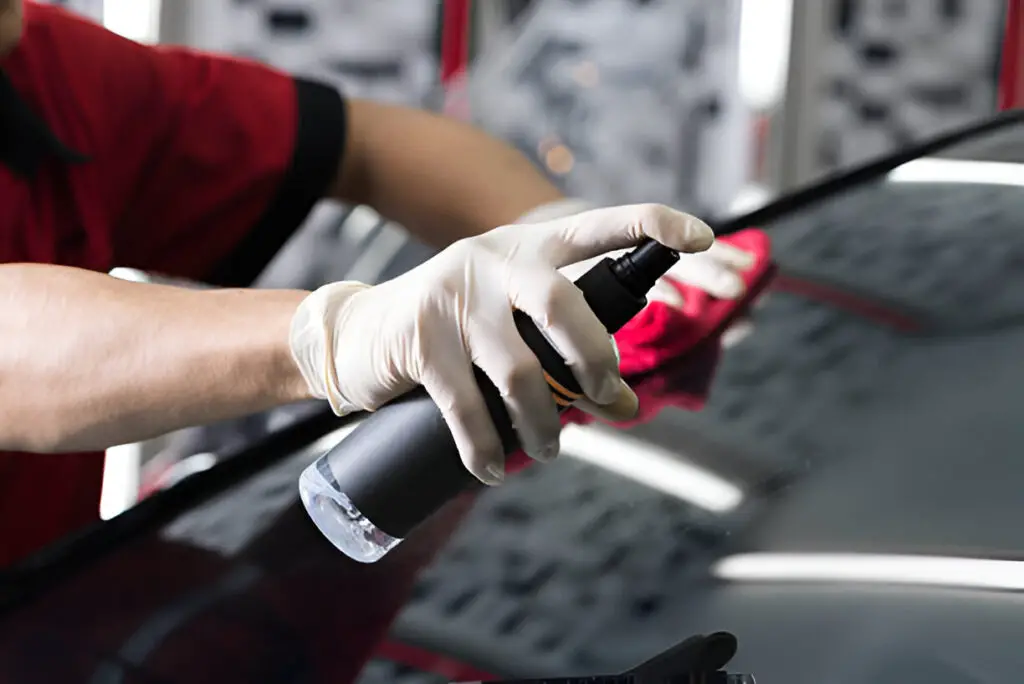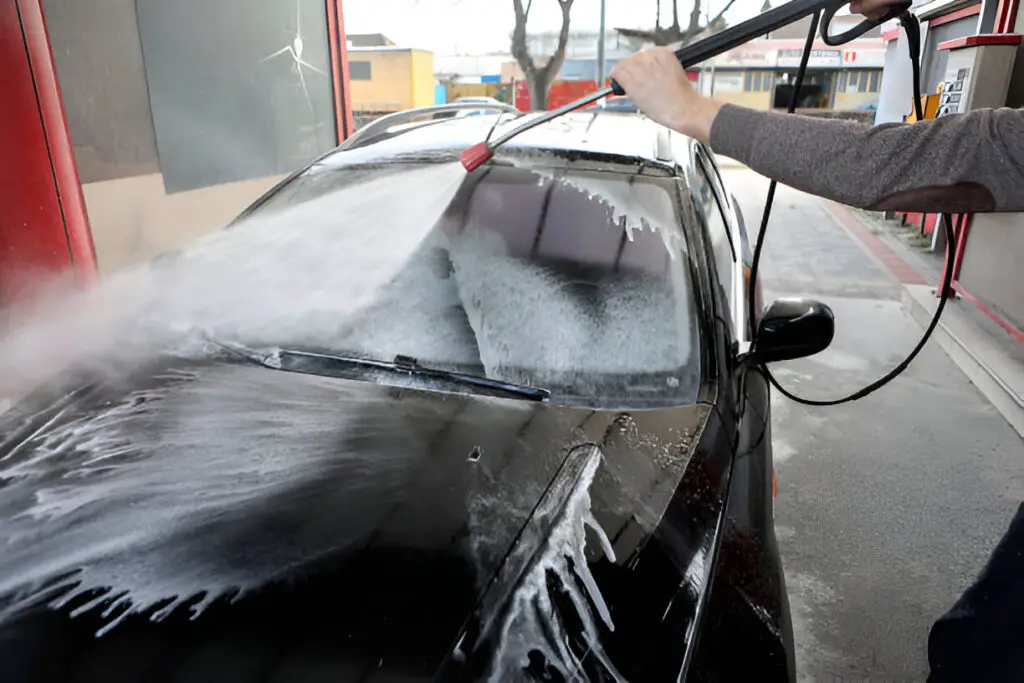To clean your windshield, park in the shade and use an ammonia-free glass cleaner with a microfiber cloth. Wipe in circular motions, then finish with straight lines for a streak-free look. Don’t forget to clean both the exterior and interior surfaces for optimal visibility.
Keeping your windshield clean is essential for clear visibility and safe driving. A dirty or streaky windshield not only hampers your view but can also cause glare and distractions. While cleaning the windshield may seem like a straightforward task, there are techniques and products that can help you achieve a crystal-clear, streak-free finish.
In this blog post, we will explore the best methods for cleaning windshield glass, common mistakes to avoid, and tips for maintaining a spotless windshield.

Contents
- 1 Why Is Cleaning Windshield Glass Important?
- 2 How to Clean Windshield Glass
- 2.1 Materials You’ll Need:
- 2.2 Step-by-Step Guide to Cleaning Windshield Glass
- 2.2.1 Step 1: Park in a Shaded Area
- 2.2.2 Step 2: Wipe Down the Windshield
- 2.2.3 Step 3: Apply the Glass Cleaner
- 2.2.4 Step 4: Wipe Using a Microfiber Cloth
- 2.2.5 Step 5: Clean the Interior Windshield
- 2.2.6 Step 6: Remove Stubborn Stains with Isopropyl Alcohol
- 2.2.7 Step 7: Use a Clay Bar for Deep Cleaning (Optional)
- 2.2.8 Step 8: Polish with a Dry Microfiber Cloth
- 2.3 Tips for Preventing Streaks on Windshield Glass
- 2.4 Homemade Windshield Cleaner Recipes
- 2.5 How Often Should You Clean Your Windshield?
- 3 Frequently Asked Questions
- 4 Conclusion
Why Is Cleaning Windshield Glass Important?
Before diving into the cleaning process, it’s essential to understand why keeping the windshield clean is crucial:
- Safety: A dirty windshield can impair the vision, especially in bright sunlight, rain, or at night. Dirt, smudges, and streaks can cause glare, making it difficult to see the road, other vehicles, or obstacles.
- Aesthetics: A clean windshield enhances the overall appearance of the vehicle. It’s a simple way to keep the car looking fresh and well-maintained.
- Longevity: Regular cleaning helps prevent the build-up of contaminants like dirt, bugs, and tree sap that can damage the windshield over time.
How to Clean Windshield Glass
Before you start cleaning, gather the necessary tools and materials. Using the right products ensures that you get the best results without damaging your windshield.
Materials You’ll Need:
- Microfiber cloths: These are highly absorbent and less likely to leave streaks or lint.
- Glass cleaner: Choose an ammonia-free cleaner to prevent damage to your car’s tint or any plastic components.
- Isopropyl alcohol (optional): Useful for removing stubborn stains and streaks.
- Distilled water: If you’re making a homemade cleaner or using water, distilled water is preferred since it doesn’t contain minerals that could leave spots.
- Squeegee (optional): For large windshields, a squeegee can help remove cleaner efficiently.
- Clay bar (optional): For deeply embedded contaminants, a clay bar can be used to lift grime from the surface.
Step-by-Step Guide to Cleaning Windshield Glass
Cleaning the car’s windshield not only enhances visibility but also improves overall safety while driving. Here’s a step-by-step guide to effectively clean both the inside and outside of your windshield:
Step 1: Park in a Shaded Area
Direct sunlight can cause the cleaner to dry too quickly, leading to streaks and spots. It’s best to clean the windshield in a shaded area or during a cooler part of the day to give the cleaner time to work without evaporating.
Step 2: Wipe Down the Windshield
Before applying any cleaner, wipe off any loose dirt, dust, or debris using a dry microfiber cloth. This step prevents dirt from being smeared across the glass, which can cause scratches and make cleaning more difficult.
Step 3: Apply the Glass Cleaner
Spray the glass cleaner directly onto the windshield, or if you prefer, spray it onto the microfiber cloth to avoid overspray on your car’s body. If your windshield is particularly dirty, you may need to apply more cleaner. Be sure to choose a cleaner specifically designed for automotive glass, as regular household glass cleaners can contain ammonia, which can damage window tint and leave residue.
Step 4: Wipe Using a Microfiber Cloth
Use a clean microfiber cloth to wipe the glass in a circular motion, working from the top of the windshield to the bottom. This ensures you’re pushing dirt and grime downward, rather than spreading it around. Pay attention to the edges, as dirt tends to accumulate there.
For a streak-free finish, wipe in straight vertical or horizontal lines after your initial circular motion cleaning. Flip the cloth to a dry side for a final pass to remove any remaining cleaner or moisture.
Step 5: Clean the Interior Windshield
The inside of the windshield can get just as dirty as the outside, especially from oils, dust, and condensation. Use the same method for cleaning the interior glass, but be mindful of overspray that could damage your dashboard or interior components. If necessary, lay a towel over your dashboard to catch any drips.
Step 6: Remove Stubborn Stains with Isopropyl Alcohol
If you notice streaks or stubborn spots that the glass cleaner didn’t remove, you can use isopropyl alcohol. Dampen a microfiber cloth with alcohol and gently rub the affected areas. Alcohol is particularly effective for removing grease, tree sap, or bug residue.
Step 7: Use a Clay Bar for Deep Cleaning (Optional)
If the windshield has deeply embedded contaminants like tree sap or road tar, a clay bar can help remove them. First, apply a lubricant (such as soapy water or a dedicated clay lubricant) to the windshield. Then, gently rub the clay bar over the surface in straight lines. The clay will pick up any contaminants, leaving your glass smooth and clean. After using the clay bar, reapply glass cleaner for a final wipe.
Step 8: Polish with a Dry Microfiber Cloth
Once you’ve thoroughly cleaned the windshield, give it a final polish with a dry microfiber cloth. This will help remove any lingering moisture or streaks, ensuring a perfect, streak-free finish.

Tips for Preventing Streaks on Windshield Glass
Streaks can be frustrating when trying to get that crystal-clear finish on the windshield. Here are some tips to help prevent streaks and achieve a spotless result:
- Use Distilled Water: If you’re making a homemade cleaning solution or using water to clean your windshield, use distilled water. Tap water contains minerals that can leave spots and streaks on the glass.
- Choose the Right Cloth: Microfiber cloths are the best choice for cleaning glass. They’re lint-free and highly absorbent, reducing the risk of streaks.
- Avoid Cleaning in Direct Sunlight: Cleaning the windshield in direct sunlight causes the cleaner to evaporate too quickly, leading to streaks. Always clean in a shaded area or when temperatures are cooler.
- Replace Worn Wipers: If the windshield wipers are worn out, they can leave streaks on the glass even after cleaning. Replace them regularly to keep the windshield clean and clear.
- Clean Regularly: Frequent cleaning prevents the build-up of grime, making it easier to achieve a streak-free finish. Don’t wait until the windshield is caked with dirt or debris.
Homemade Windshield Cleaner Recipes
If you prefer a DIY solution, here are two simple and effective recipes for homemade windshield cleaners:
- Vinegar and Water Solution
- 1 part white vinegar
- 2 parts distilled water
- Alcohol and Water Solution
- 1 cup isopropyl alcohol (70%)
- 1 cup distilled water
- 1 tablespoon white vinegar (optional)
How Often Should You Clean Your Windshield?
For the best visibility and safety, it’s a good idea to clean your windshield at least once every two weeks. However, this frequency may increase if you frequently drive in dusty environments or during bug-heavy seasons. Regular cleaning not only keeps the windshield clear but also extends the life of your wipers and glass.
Frequently Asked Questions
Here are some FAQs about cleaning windshield glass –
Can I use household glass cleaner on my windshield?
It’s best to avoid household cleaners that contain ammonia, as they can damage window tint and leave streaks. Instead, use a cleaner specifically designed for automotive glass or a homemade solution with vinegar or alcohol.
How do I prevent streaks when cleaning my windshield?
Clean in the shade, use microfiber cloths, and wipe in a consistent pattern (either vertical or horizontal lines). Avoid cleaning in direct sunlight, as it can cause the cleaner to dry too quickly and leave streaks.
Why does my windshield look hazy after cleaning?
A hazy windshield can be caused by residue from cleaning products, dirty wiper blades, or contaminants like road grime. Try using distilled water or isopropyl alcohol for a final wipe-down, and ensure your wiper blades are clean and functional.
How do I remove tough spots like bugs or tree sap?
For stubborn spots like bugs or sap, use a clay bar or isopropyl alcohol to gently rub the affected area. A clay bar can help lift embedded contaminants from the glass surface.
Can I use vinegar to clean tinted windows?
Yes, vinegar is safe for cleaning tinted windows as long as it’s diluted with water. Avoid using any products that contain ammonia, as it can damage the tint film.
Conclusion
Cleaning your windshield might seem like a simple task, but the right approach can make all the difference in achieving a clear, streak-free finish. With proper materials, techniques, and attention to detail, you can keep your windshield spotless, ensuring safety and visibility on the road.